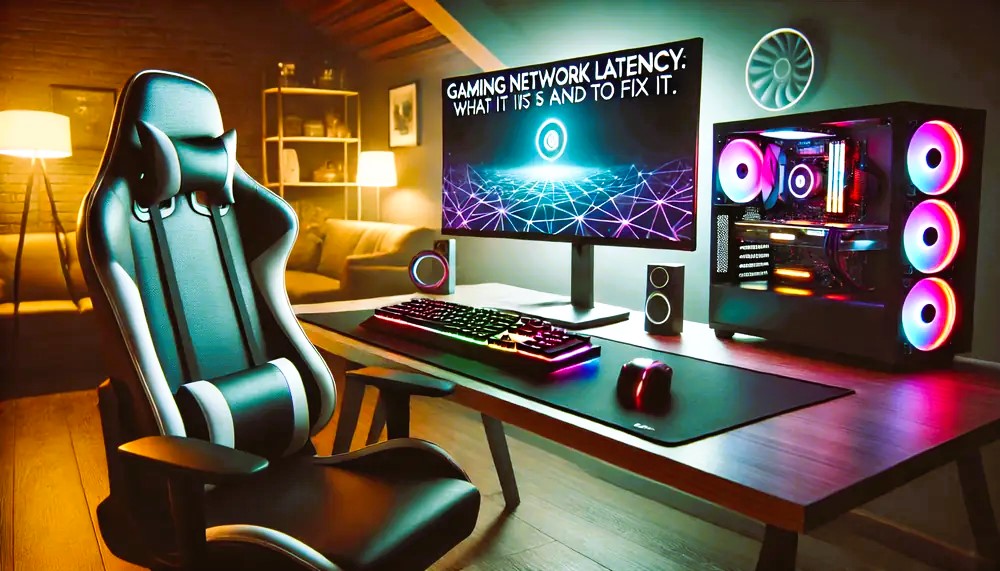Online multiplayer games rely heavily on a seamless and responsive connection between players and game servers. Whether you’re battling enemies in a fast-paced first-person shooter or strategizing with teammates in a real-time strategy game, latency plays a crucial role in determining the quality of your gaming experience. But what exactly is latency, and why does it matter so much in online gaming? In this article, we’ll explore the concept of latency, how it impacts online multiplayer games, and what you can do to minimize its effects.
What is Latency?
Latency, often referred to as “ping,” is the amount of time it takes for data to travel from your gaming device to the game server and back. It is typically measured in milliseconds (ms). While download and upload speeds are important for overall internet performance, latency specifically affects how quickly your actions in a game are registered and displayed.
For example:
- Low Latency (20-50 ms): Actions such as shooting or moving are registered almost instantly, providing a smooth experience.
- High Latency (100+ ms): Actions may be delayed, leading to lag, which can disrupt gameplay and frustrate players.
How Latency Affects Gameplay

Latency can have a significant impact on various aspects of online multiplayer games. Here are some of the ways it manifests:
1. Delayed Actions
In high-latency environments, there’s a noticeable delay between pressing a button and seeing the corresponding action occur in the game. This can make precise gameplay—like aiming in a shooter or executing combos in a fighting game—extremely challenging.
2. Desynchronized Gameplay
High latency can cause desynchronization between players. For instance, you might see an enemy in one position, but the server registers them elsewhere, making it difficult to react accurately. Did you like the article? Read also about Download vs. Upload Speed.
3. Rubberbanding
Rubberbanding occurs when your character or another player’s character appears to snap back to a previous position. This happens because the server is trying to reconcile mismatched data caused by latency.
4. Game Disconnections
Severe latency issues can result in players being disconnected from the game entirely, especially in competitive environments where stable connections are prioritized.
Why Low Latency is Crucial in Competitive Gaming
In competitive gaming, every millisecond counts. A delay of even 10-20 ms can mean the difference between winning or losing a match. Esports tournaments and ranked matches demand the lowest latency possible to ensure fair play and equal opportunities for all participants.
Reaction Times vs. Latency
The average human reaction time is around 200-250 ms. If your latency adds another 100 ms to this, you’re already at a disadvantage compared to someone with a 20 ms ping.
Factors That Contribute to Latency
Several factors can influence latency. Understanding these can help you identify and address the root causes of high ping.
1. Distance from Server
The farther you are from the game server, the longer it takes for data to travel back and forth. Many games allow players to select servers based on geographic proximity to minimize latency.
2. Network Congestion
A crowded network, either at your home or on your Internet Service Provider’s (ISP) end, can increase latency.
3. Wi-Fi vs. Ethernet
Wi-Fi connections tend to have higher latency compared to wired Ethernet connections due to interference and signal loss.
4. Quality of Internet Connection
The speed and reliability of your internet connection, including your ISP’s infrastructure, can significantly impact latency.
5. Hardware Limitations
Older or less capable routers and gaming devices may struggle to process data quickly, leading to higher latency.
How to Minimize Latency in Online Multiplayer Games

Reducing latency is essential for improving your gaming experience. Here are some practical steps you can take to lower your ping:
1. Use a Wired Connection
Whenever possible, connect your gaming device directly to your router using an Ethernet cable. This eliminates the interference and signal degradation common with Wi-Fi.
2. Choose the Right Server
Select a game server located closer to your physical location. Many games display server latency in the settings menu, allowing you to pick the fastest option.
3. Optimize Your Network
- Disconnect devices not in use from your network.
- Avoid streaming or large downloads while gaming.
- Enable Quality of Service (QoS) settings on your router to prioritize gaming traffic.
4. Upgrade Your Equipment
Invest in a modern router with gaming-specific features like low-latency optimization and multiple frequency bands.
5. Test Your Internet Speed
Regularly check your internet speed and ping using tools like Speedtest. Aim for a ping below 50 ms for the best gaming experience.
The Role of Game Developers and ISPs
Game developers and ISPs also play a crucial role in ensuring low-latency experiences for players:
- Game Developers: Optimizing server infrastructure and offering dedicated servers for multiplayer games can reduce latency. Developers can also implement netcode techniques like lag compensation to mitigate the effects of high latency.
- ISPs: Some ISPs offer gaming-focused internet plans with lower latency. They may prioritize gaming traffic or provide faster routing to popular gaming servers.
Latency is one of the most important factors affecting the performance and enjoyment of online multiplayer games. By understanding what latency is, how it impacts gameplay, and what steps you can take to reduce it, you can significantly improve your gaming experience.
Whether you’re a casual gamer or an esports enthusiast, optimizing your connection for low latency is key to staying competitive and having fun. For more information on latency and its role in gaming, check out this Wikipedia article on latency.
With the right setup and strategies, you can minimize latency and enjoy a seamless gaming experience, free from frustrating lags and delays.

